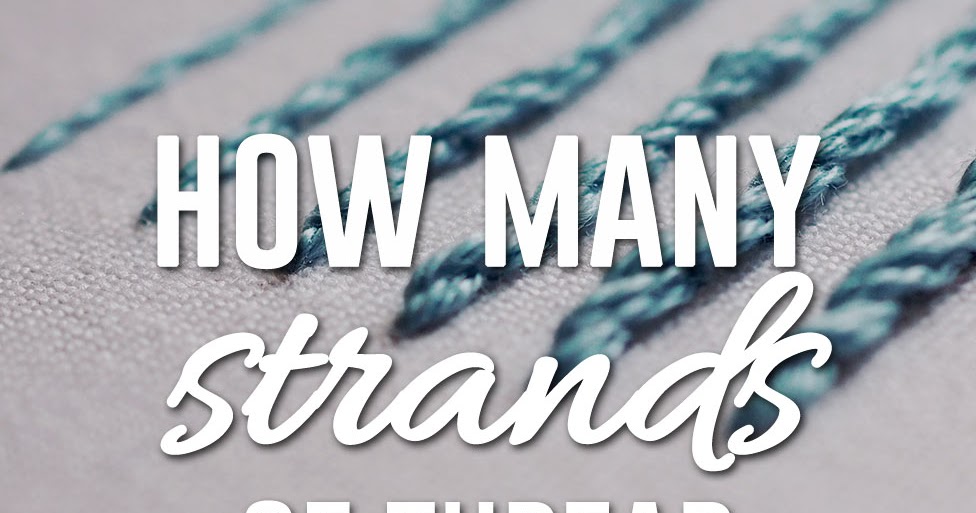Embroidery: An Enduring Tapestry of Creativity
For centuries, embroidery has adorned fabrics, transforming them into vibrant masterpieces. This intricate art form involves stitching threads onto a base material, creating an array of patterns, textures, and designs. One of the key elements in embroidery is the choice of threads, which greatly influences the outcome of the project. In this comprehensive guide, we will explore the intricacies of selecting the right number of embroidery thread strands for your creations.

Image: stitchfloral.blogspot.com
Anatomy of an Embroidery Thread
Embroidery threads are typically made of cotton, silk, rayon, or a blend of these materials. They come in various weights, measured by “threads per inch” (TPI), or the number of individual strands that make up a single thread. Each weight has specific characteristics that affect its texture, sheen, and durability.
Strand Selection: A Balancing Act
The number of embroidery thread strands you use will depend on several factors:
1. Effect: One or two strands create a delicate and airy look, while three to four strands add depth and dimension. Using more strands can create bolder and more textured effects.
2. Fabric Weight: Lightweight fabrics require fewer strands to avoid puckering, while heavy fabrics can withstand more.
3. Design Complexity: Intricate designs with fine details look better with fewer strands, while simpler designs can handle more strands for a fuller effect.
4. Needle Size: Larger needles can accommodate more strands, while smaller needles work better with fewer.
A Thread by Thread Guide
Based on these considerations, here’s a general guide to strand selection:
1. Lightweight Fabrics (e.g., silk, organza): 1-2 strands for delicate designs, 3-4 strands for heavier thread or denser stitches.
2. Medium-Weight Fabrics (e.g., cotton, linen): 2-3 strands for most designs, 4-6 strands for textured or bolder effects.
3. Heavyweight Fabrics (e.g., denim, canvas): 3-4 strands for general use, 5-6 strands for dense stitches or raised embroidery (e.g., crewelwork).

Image: www.pinterest.co.uk
Expert Insights: Threading the Future
“Experimentation is key,” advises renowned embroiderer Mary Corbet. “Try different strand combinations on scrap fabric to see how they interact with the design and fabric.”
Industry veteran Suleika Muñoz emphasizes the importance of thread quality: “Invest in high-quality threads because they will produce better results and last longer.”
Actionable Tips: Stitching for Success
Here are some practical tips to guide your thread selection:
- Use fewer strands for subtle details and more strands for bold outlines and filled areas.
- Avoid using too many strands for small designs, as it can create a crowded and heavy look.
- Experiment with different thread weights and types to create various effects, such as shiny metallic strands for highlights or matte cotton strands for a more subdued look.
- Keep a sample book with different thread combinations to reference for future projects.
How Many Strands Of Embroidery Thread To Use
https://youtube.com/watch?v=rv702Gq9yfE
A Timeless Tale of Thread
In the hands of skilled embroiderers, thread becomes a vibrant brush, painting stories and emotions on fabrics. The choice of strands is an integral aspect of this art form, affecting the appearance, texture, and longevity of the embroidery. By understanding the principles outlined in this guide, you can embark on your own embroidery journey, stitching a legacy that will last for years to come.